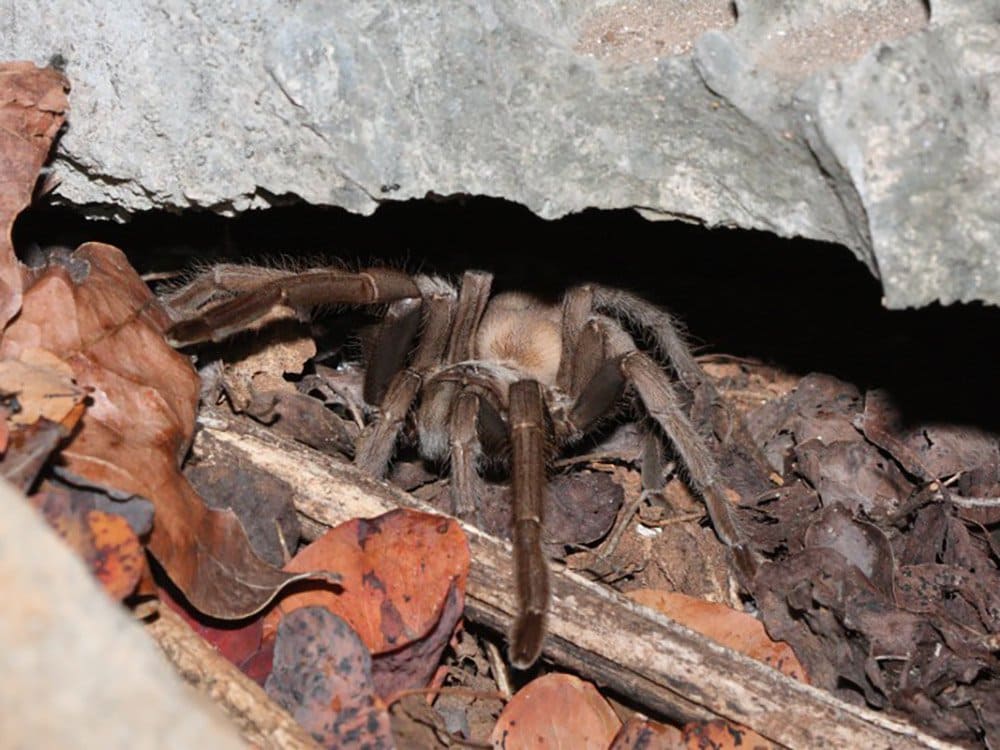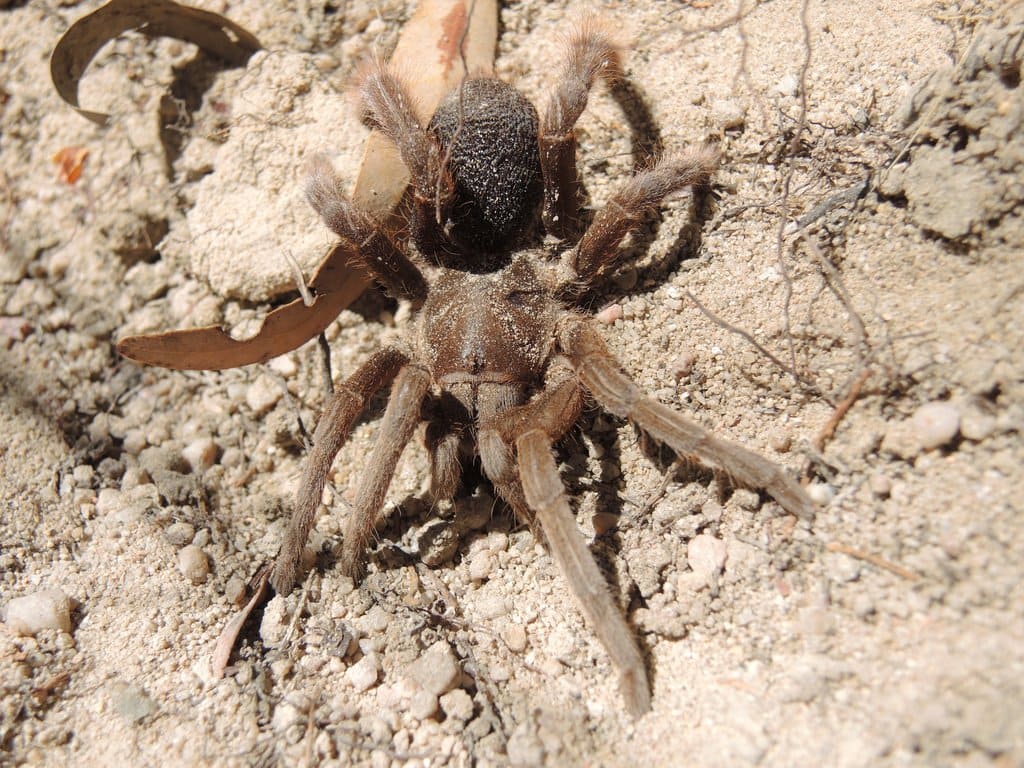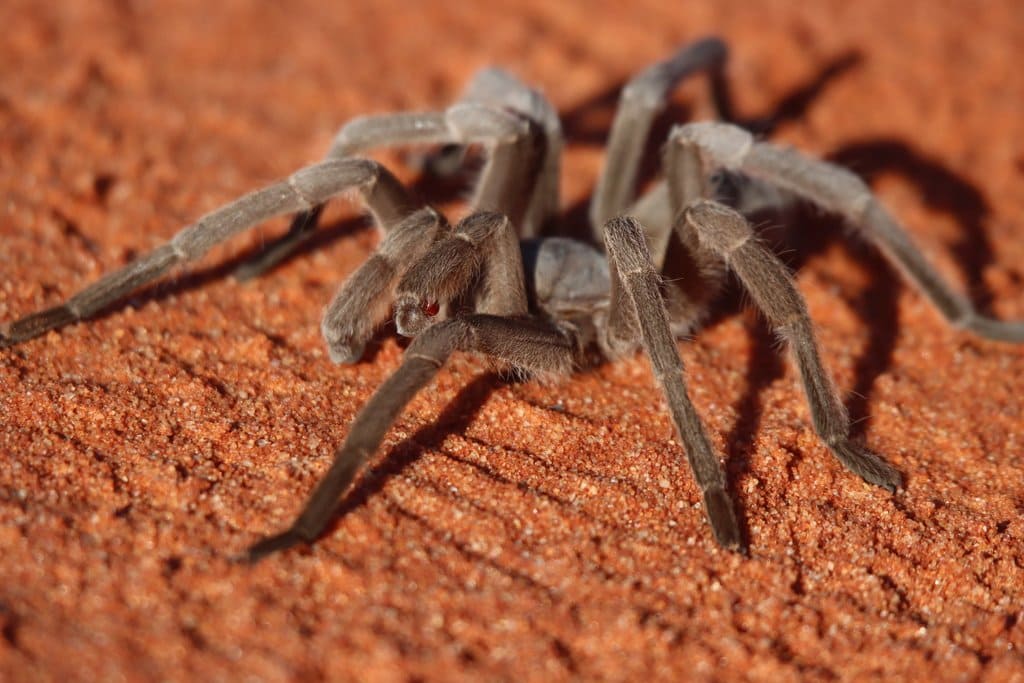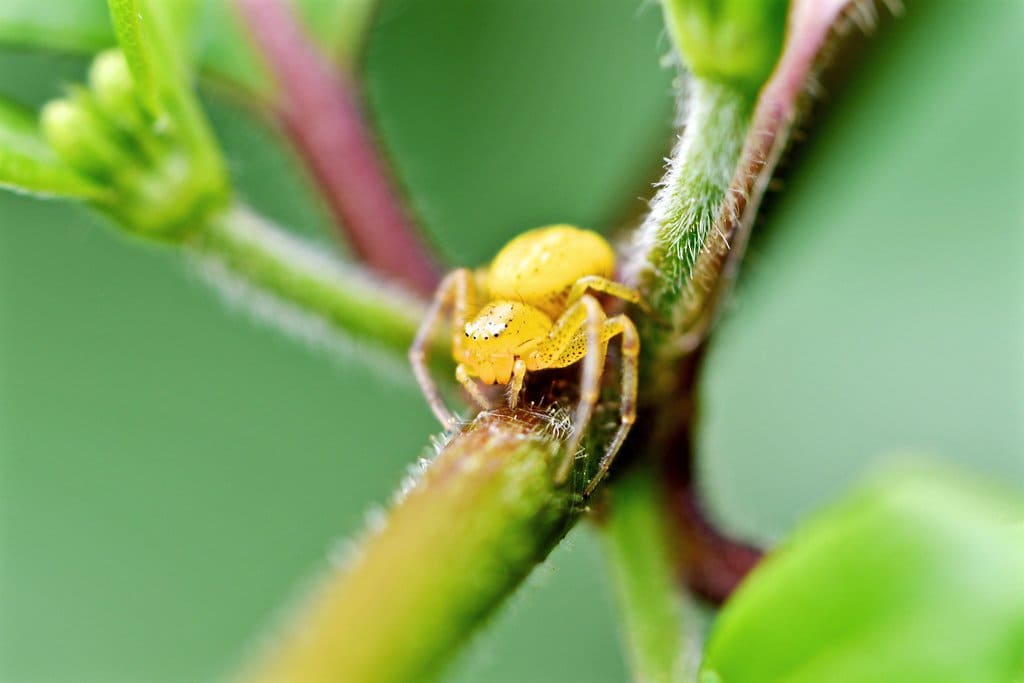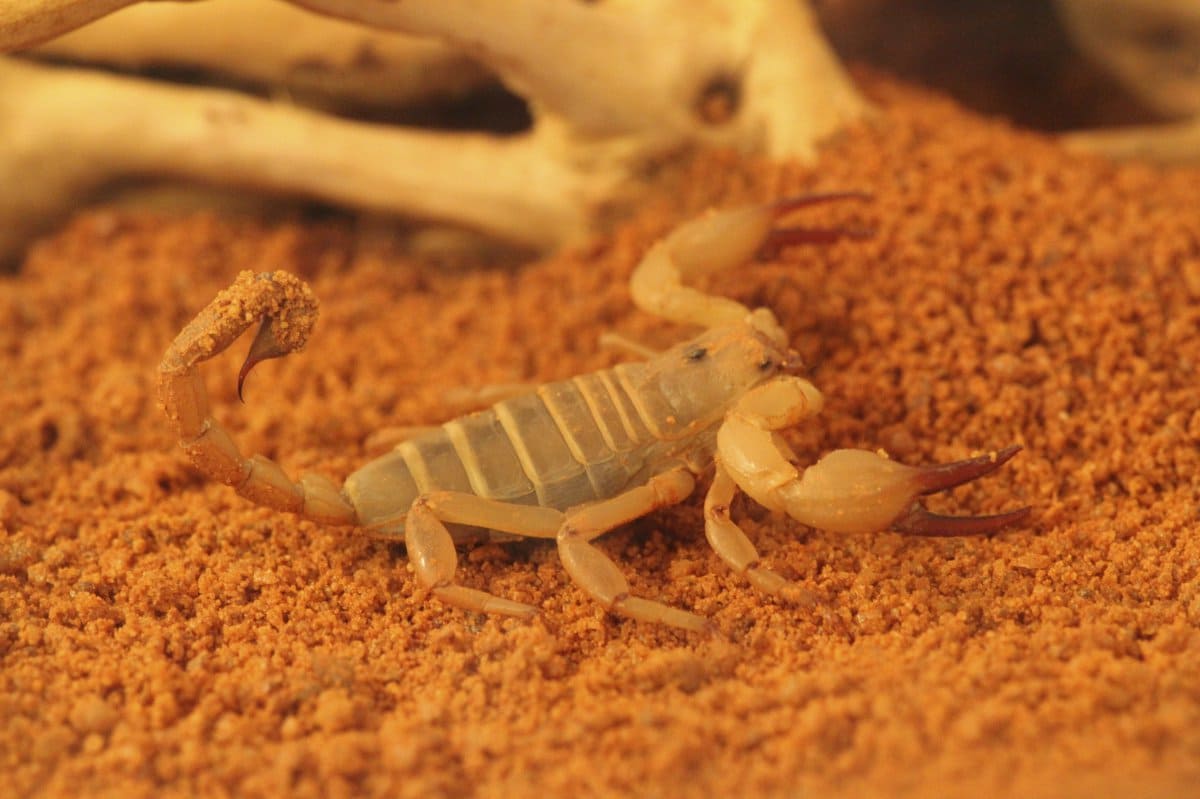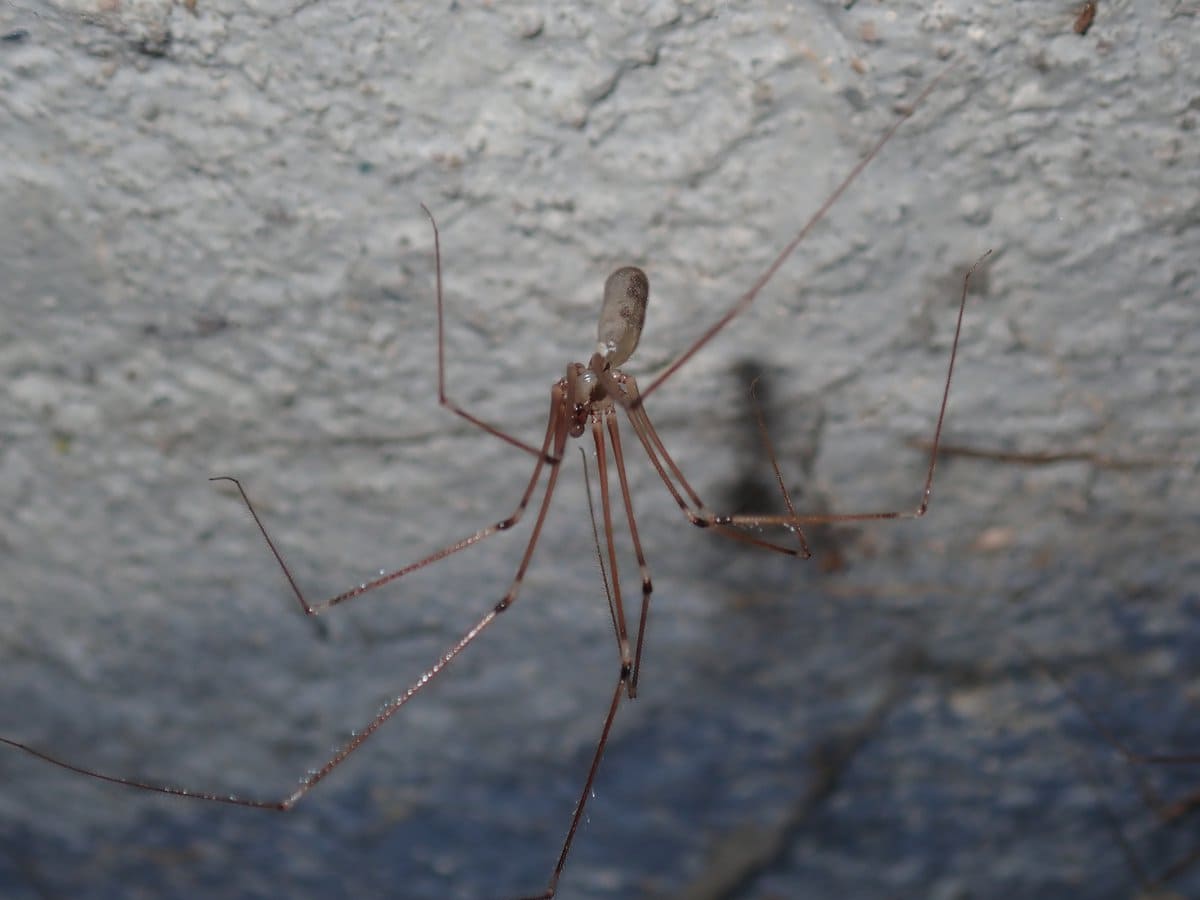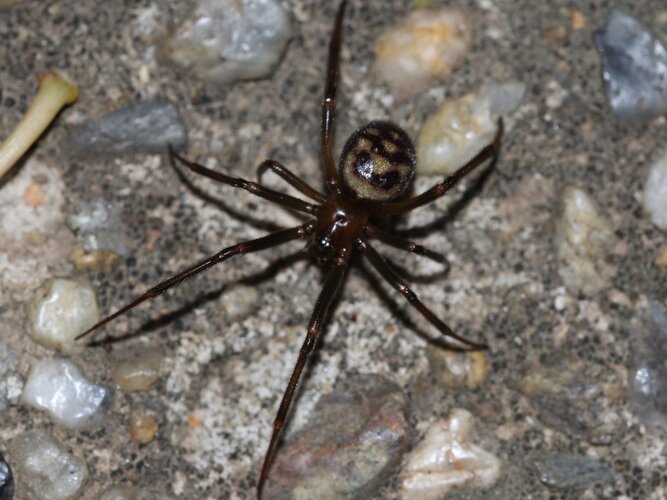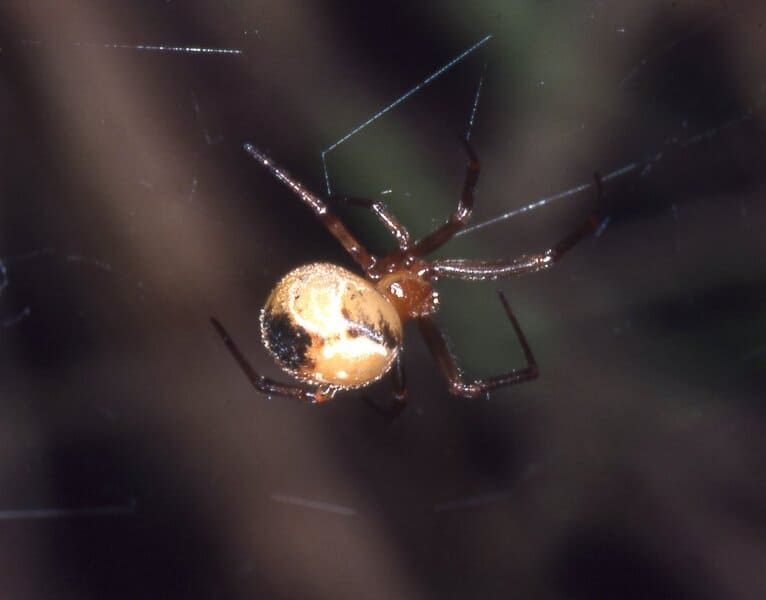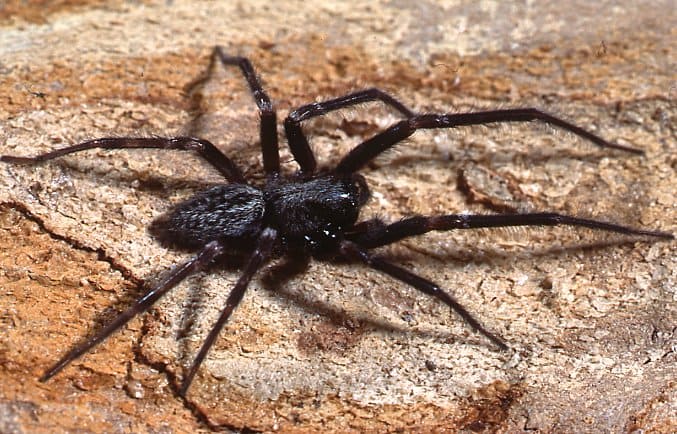Australian tarantulas
IUCN
LCBasic Information
Scientific classification
- name:Australian tarantulas
- Scientific Name:Theraphosidae (e.g., Selenocosmia, Phlogius, Selenotholus, Selenotypus)
- Outline:Arthropoda
- Family:Theraphosidae Selenocosmia Phlogius
Vital signs
- length:Body length 5–8 cm; legspan 16–22 cm
- Weight:Large ground spiders; tens of grams in adults
- lifetime:Females 10–20+ years; males 5–8 years
Feature
Burrowing, nocturnal; defensive stridulation; generalist predation; male wandering; female egg‑sac guarding.
Distribution and Habitat
Tropical savannas to arid woodlands/semi‑deserts of northern & inland Australia; stable, diggable soils.
Appearance
Dark brown to blackish; pale joint banding; dense abdominal setae; male tibial spurs.
Details
Australian tarantulas, locally known as whistling spiders, belong to the family Theraphosidae. Representative genera include Selenocosmia, Phlogius, Selenotholus, Selenotypus. They areground‑dwelling burrowers capable of producing a defensive stridulation (“whistle”) and are iconic in northern and inland Australia.
Ecology & Biology
Activity: mostly nocturnal; by day they remain in vertical/oblique soil burrows lined with silk and radial trip lines.
Diet: generalist predators feeding on insects, other spiders, and occasionally small lizards/frogs and arthropods.
Defence: threat posture with chelicerae displayed and a characteristic whistling stridulation; rapid biting if pressed.
Reproduction: adult males wander to find mates; females lay a silken egg sac and guard it in the burrow; juveniles disperse nearby.
Identification
Size: body length typically 5–8 cm; legspan up to 16–22 cm.
Colour: dark chocolate‑brown to blackish; pale banding on leg joints in some species; dense abdominal setae.
Mouthparts/legs: down‑striking fangs; males often with tibial apophyses (mating spurs).
Range & Habitat
Northern and inland Australia (Queensland, Northern Territory, northern Western Australia), from tropical savannas toarid woodlands and semi‑deserts; prefer diggable, stable soils along banks, pastures and embankments.
Conservation & People
Medical relevance: bites are very painful to humans but rarely life‑threatening; dogs may be at greater risk—seek veterinary care promptly.
Trade: present in the hobby; favour captive‑bred stock and follow local regulations to avoid wild collection pressure.
IUCN: this is a group‑level entry; many species lack individual assessments. Marked here as Not Evaluated (NE).
FAQ
Q1. Do Australian tarantulas kick urticating hairs? No—unlike many New World tarantulas, Australian taxa lack urticating hairs; defence relies on threat display/stridulation and bites.
Q2. Are bites deadly to humans? Typically not, but they are very painful with local swelling/sweating and nausea possible. Keep calm, immobilise and seek medical care.
Q3. Home prevention? Reduce yard debris/rock piles, seal cracks and door gaps, use screens; never dig out burrow entrances.
Q4. Can they be kept in captivity? Where legal, use captive‑bred animals and provide deep substrate for burrowing with appropriate temperature/humidity.


